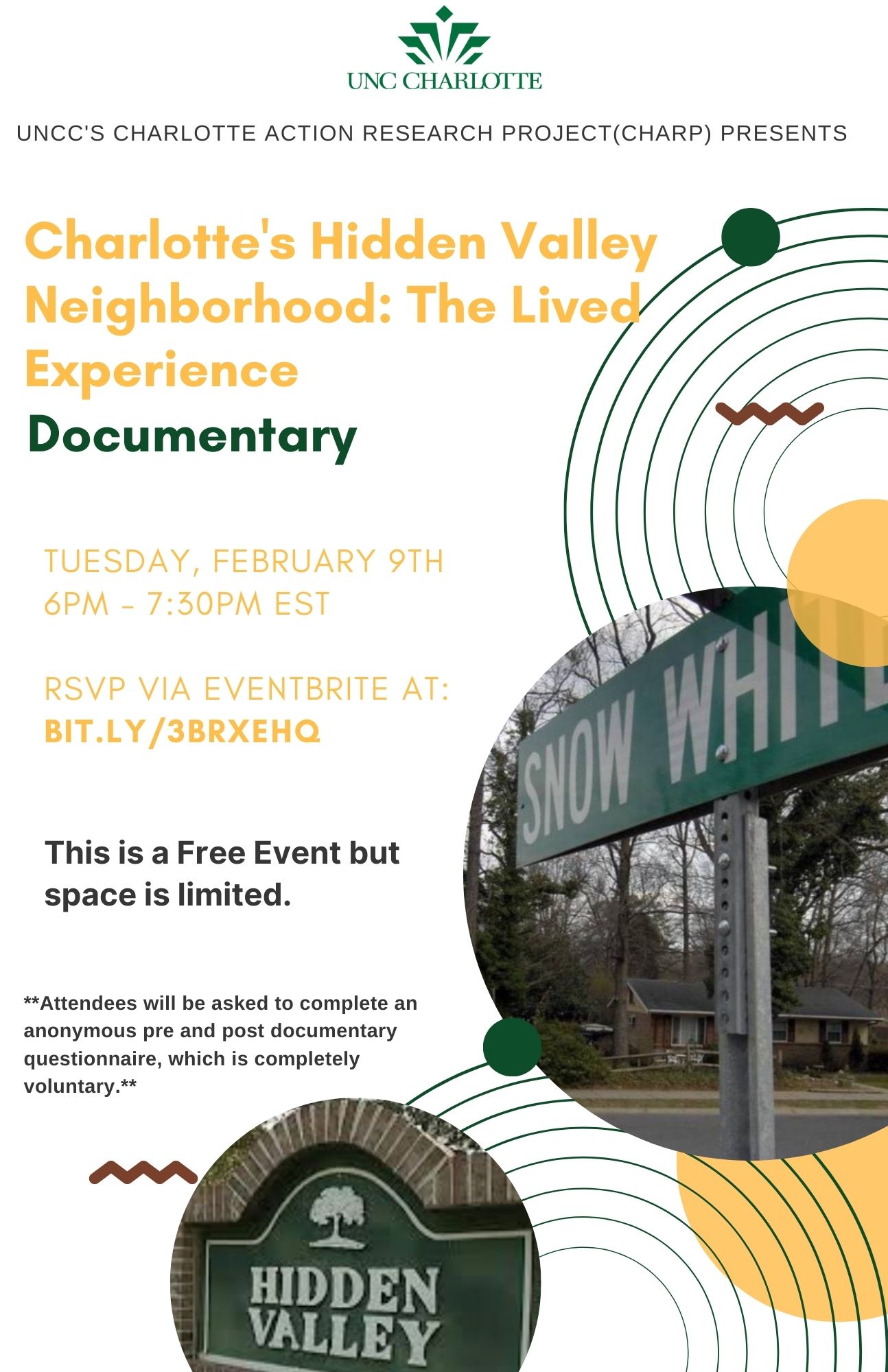A new documentary illuminates the real Hidden Valley neighborhood
If all you know of Hidden Valley is news stories and TV shows about gangs, you might picture the neighborhood as a crime hotspot — and little more.
But the reality for the neighborhood’s thousands of residents is much richer, more complex and varied than popular media accounts. That’s what Barbara Pinson Lash, a longtime television news anchor and reporter, and PhD candidate in the Geography and Earth Sciences department, wants to show in a new documentary, “Charlotte’s Hidden Valley Neighborhood: The Lived Experience.”
“I hope people walk away seeing what the community really is,” she said. “It’s a multifaceted, unique, diverse, family-oriented neighborhood.”
Lash first heard of Hidden Valley during her years in the news broadcasting business, when the neighborhood was often portrayed as a hotbed of crime. But doing work with the Charlotte Action Research Project (CHARP) — which began partnering with the neighborhood in 2018 — Lash immediately saw that view didn’t line up with the neighborhood’s reality.
“It just did not align with what was happening in the community,” she said. “Yet the stigmatization stays locked in the minds of outsiders. I’m hoping this documentary will help curtail some of that stigma by sharing the lived experience, rather than the imagined one.”
Colleen Hammelman , CHARP’s director, said “This project was driven by resident desires to change that negative narrative about their neighborhood. Instead, we wanted to center the assets and positive stories of residents.”
The documentary will debut in a virtual screening Tuesday, Feb. 9, at 6 pm. Registration is free but required, and spaces are limited. You can sign up online here.
Lash said future screenings are in the works (which will likely be virtual as well due to the ongoing pandemic).
Hidden Valley is a large neighborhood in northeast Charlotte, nestled between I-85, Sugar Creek and North Tryon streets. Originally built in the late 1950s, the neighborhood’s makeup gradually changed from largely white residents to a population that’s now mostly Black and Hispanic/Latino.
The documentary is the first for Lash. She said she hopes it spurs both changes in how people see Hidden Valley and a larger discussion about how the media and popular narratives unfairly stigmatize some neighborhoods.
“I want my industry to understand what’s at stake with the traditional approach to news reporting,” she said. “We flood a neighborhood with these negative reports and we rarely return to highlight resolutions and/or positive initiatives. At the end of the day, we play an integral role in shaping urban geography with our reporting.”
– By Ely Portillo
